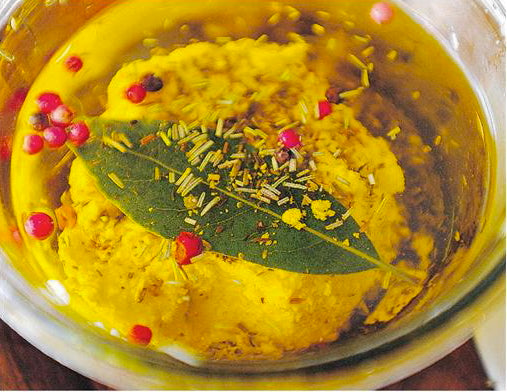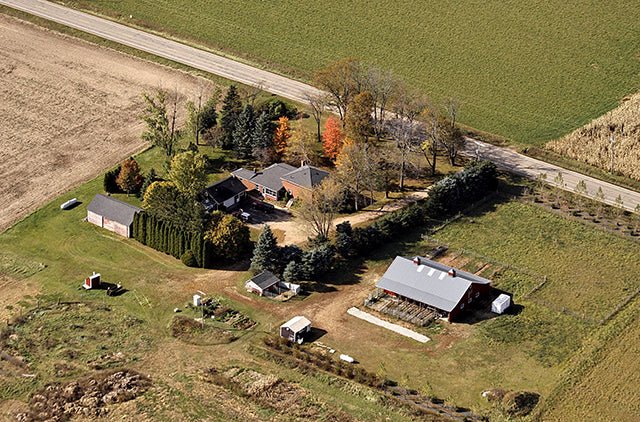Don’t you just love her?
This is Valerie (A Canadian Foodie) who makes her living writing about food and educating folks about it. Until last year (and for the last 30 years) she taught in public schools, but she is now retired and living in Edmonton, Alberta (Canada). She’s still teaching, but now it’s about food, fun and using the amazing Thermomix.
Currently, she’s probably best known (and most busy) as one of the four organizers of Cheesepalooza, an exciting online event where participants accept the challenge to make a different cheese every month. There are currently 60 happy cheeseheads registered and anyone can join, so, go ahead and you will be welcome.
At Valerie’s website, there are great articles (as thorough as the one below) about making Halloumi, Feta and Chevre. She takes all her own pictures and lots of them, so be sure to check them out.
Valerie’s website – A Canadian Foodie
Cheesepalooza
Facebook Cheesepalooza
Twitter Cheesepalooza
Cabécou (“Little Goat”): A Classic Fresh French Goat Cheese Made at Home
By Valerie Rodgers Lugonja at A Canadian Foodie
An Alternate Fresh Cheese for Cheesepalooza* from page 51 of Artisan Cheese Making at Home.
The photo of this cheese in Mary Karlin’s Cookbook had me at “hello!” I knew I was making this cheese. Not too different that making chèvre, but specific moulds, salting process, air drying time and seasoning. I have made it twice. It is easy and unexpectedly delicious. I wouldn’t call it Cabécou, though. That cheese comes from a very specific terrior in France and is considerably different than this. The recipe or idea may be initially the same, but that is a problem with many artisanal cheeses made in the new world: they are called the same “old world” name. I am calling this Potted Little Goat made after the manner of Cabécou.
The small discs of cheese are layered between Herbes de Provence, a fresh bay leaf and exotic peppercorns bathed in a fruity golden olive oil I brought back from Italy last fall. Addie wanted to make it, as well, so we got together and gave it a go. I tasted it for the first time at the Cheesepalooza Challenge One Local Tasting and was blown away by the unexpected pleasure. The texture was so creamy and the herbes and spices were subtle, yet presented a very pleasing savory “hello!”. I knew at that moment that this cheese was a keeper. If you are a friend, this is my new hostess gift!
Having traveled to France more than a few times, when I saw the photo of this cheese on page 50, I knew I had to make it. Fresh and young cheeses hold my attention through my travels and I saw varieties packed in oil with seasonings like this one at the open air markets in the French country side. After reading that this recipe is from the Languedoc area of France, I was completely in, as I have been there, too. The open air markets where I recall seeing similar cheeses were in Provence and in the Aix en Provence areas. I could not taste, nor buy everything at that time, so I was eager to relax and work to make this at home!
Interestingly, Mary Karlin notes that this marinated version of the Cabécou originated in the United State by Laura Chenel and is one of her company’s signature cheeses. Also, learning more about this cheese has had me discover that it is claimed as a regional artisanal cheese in the Midi-Pyrénées area of France. It is claimed to be from Rocamadour, a medieval settlement erected directly on a cliff, in the rich countryside of Causses du Quercy. This area is one of the region’s oldest milk producers; it has chalky soil, marked by history and human activity, and is favourable for the raising of goats. A similar cheese is also known as Rocamadour. They are not the same cheeses, though some profess them to be. Cabécou is a ripened goat cheese, stinky with mild flavor and oh, so creamy inside. As it ages, it grows a mold, becomes stinky and hardens to a grating state. (That experiment will be next time.) This time I am keeping it in oil.
There is an authentic recipe for Cabécou cheese in this book. Anyone have it? How does the recipe compare to the recipe I used?
I have noted the information from the conversation about Cabécou on this site, which I have found to be most accurate:
CABECOU/ROCAMADOUR (AOC) Made with raw goat’s milk, from the plains; this tiny, but highly pleasing cheese matures well, acquiring body and presence. Each year some 490 tonnes are produced in the triangle between Rocamadour, Gramat, and Carlucet. In the langue d’Oc, the old language of the south, a cabécou is a small goats cheese. The fresh, spring cheeses, smelling of grass and milk, are worth trying. The AOC “Rocamadour” reserved for goat’s milk cheeses, was granted on 16 January, 1996.
CABECOU DE GRAMAT This fermier cheese has an affinage of a minimum of ten days. Uncooked, unpressed, 1.6-2 in diameter, 0.4-0.6 in high, 1.1-1.4 ounces weight, 45% milkfat, produced spring-autumn. Rind of natural mold.
CABECOU A fermier Cabécou from the region of Quercy.
CABECOU DE ROCAMADOUR (AOC) These small fermier and artisanal cheeses are small and mature rapidly. They have a thin rind, and a tender, creamy pate with a subtle scent reminiscent of milk and mold. The aftertaste is equally light, of sugar and hazelnuts. Affinage takes anything up to four weeks. Same dimensions etc as above.
PICADOU This cheese is produced by wrapping a ripe Cabécou in walnut or plain leaves. It is then sprayed with marc of plums and preserved in an air-tight container. The crushed pepper adds spice to an already piquant cheese.
And, now, there is the “Potted Little Goat” from Edmonton, Alberta, Canada via Mary Karlin’s Artisan Cheese Making at Home. Smoky Valley Goat Cheese will hopefully be making and selling this cheese.
As Addie and I worked through the first process there were problems. There often seems to be, the first time. We didn’t have liquid rennet and it called for one drop mixed with five tablespoons of water. We worked on translating that with the tablet rennet we had and it worked well with my batch. We were doing two batches, so we decided to do one with our Mesophilic Mother Culture (Addie’s batch), and one with the C20G culture suggested in the recipe. The problem seemed to be that this culture is made specifically for chèvre and containes 1/4 teaspoon per packet for one gallon of milk. Mary Karlin’s recipe is for 2 quarts of milk, so we were a bit confused, and decided to use only 1/2 the package or 1/8th of a teaspoon of the culture, instead of the whole one as the recipe indicates. The second time I made it, I used the entire package and the liquid rennet as suggested. Interestingly, the results were not vastly different. The first batch was somewhat more fragile. The discs were not as compact as the second batch. The Mother Culture batch didn’t work. We think possibly because we added too much rennet. We shared the rennet equally, but as it was a tablet and not completely dissolved, we thought that Addie’s batch needed a bit more. It was delicious, but looked and tasted like a loose feta. Below, (first photo only) is the second batch curd and above is the first batch curd.
I am very proud of the moulds Vanja and I made with plastic glasses and his electric drill gun. He actually did most of the work after painstakingly watching me “having at ‘er”! They worked like a charm. If you look at the photos below, carefully, you will see Addie’s batch drain at lightening speed compared to mine, due to the difference in the curd. (We made both batches together, but I am differentiating them for explanation purposes only.)
You can see in the photo how much more dense the disc is in the second photo (second batch) than in the one above it (first batch).
Tasting Notes for Potted Little Goat Cheese:
- Appearance: somewhat compact little disc
- Nose: (aroma): none
- Overall Taste: the affect of the balance between the herbs, spice and salt with the goat milk was immediate pleasure to my palate; the peppers added a je ne sais quoi to the tasting as there was not a peppery flavour, per se, yet there was a perfume that enhanced the flavour that was indiscernible: utterly delicious
- Sweet to Salty: salty
- Mild (mellow) to Robust to Pungent (stinky): very mild
- Mouth Feel: (gritty, sandy, chewy, greasy, gummy, etc.): unexpectedly creamy, a very pleasurable mouth feel
________________________________________________________________________________
Print This
Valerie and Addies Cabécou Recipe (the first batch)
Ingredients:
2 quarts goat’s milk (we used low pasteurization milk Fairwind’s Farm bought at Planet Organic)
1/2 package (1/8 teaspoon) of C20G Mesophilic starter culture from New England Cheese Making Co. (This is their prepackaged Chévre starter and includes rennet in it.)
2 teaspoons Diamond Crystal Kosher Salt
1 tablespoon herbs de Provence
4 fresh bay leaves
2 teaspoons whole mixed peppercorns
4 cups fruity extra virgin olive oil
Instructions:
We followed the directions in her book exactly with the exception of adding the rennet and added only half of the C20G she suggested in her recipe (as explained above)
I didn’t have liquid rennet, so we used this mixed culture without adding extra rennet though Mary’s recipe calls for this exact starter culture, and the entire 1/4 teaspoon, or the full package for 2 quarts of milk; the recipe on the C20G package that was titled Chévre called for 4 litres of milk, that is why we chose to use only half of it. This was very confusing as I went to the website and this was the only C20G starter I could find on it was specifically for making chévre, yet Mary makes no mention of this. As well, the directions on the package call for 4 litres of milk and her recipe is for 2 litres using the same amount of culture. Maybe we should have added a drop of rennet to this. Only making it again, will tell me this.
________________________________________________________________________________
Below, are two of the peppercorn varieties I used, as well as the Herbes de Provence I brought back with me from France last summer.
















































































































































































